What can you find in 2023 Shipping Industry Trends and Future of Shipping in 2024 report?
Shipping Industry Trends in 2023
1. Due to cautious consumer spending, low growth in container demand in 2023 and beyond
Due to longer-term factors such as inflation, increased interest rates, and a structural shift of consumer spending patterns from goods to services, cautious consumer spending in 2023 is likely to extend into 2024. Households are expected to prioritize essentials over discretionary expenses, impacting demand for imported manufactured products.
The average prices of cargo-worthy 40ft containers in China have plummeted from $2,094 in October 2022 to $1,343 in October 2023, a whopping 55% drop in just a year.
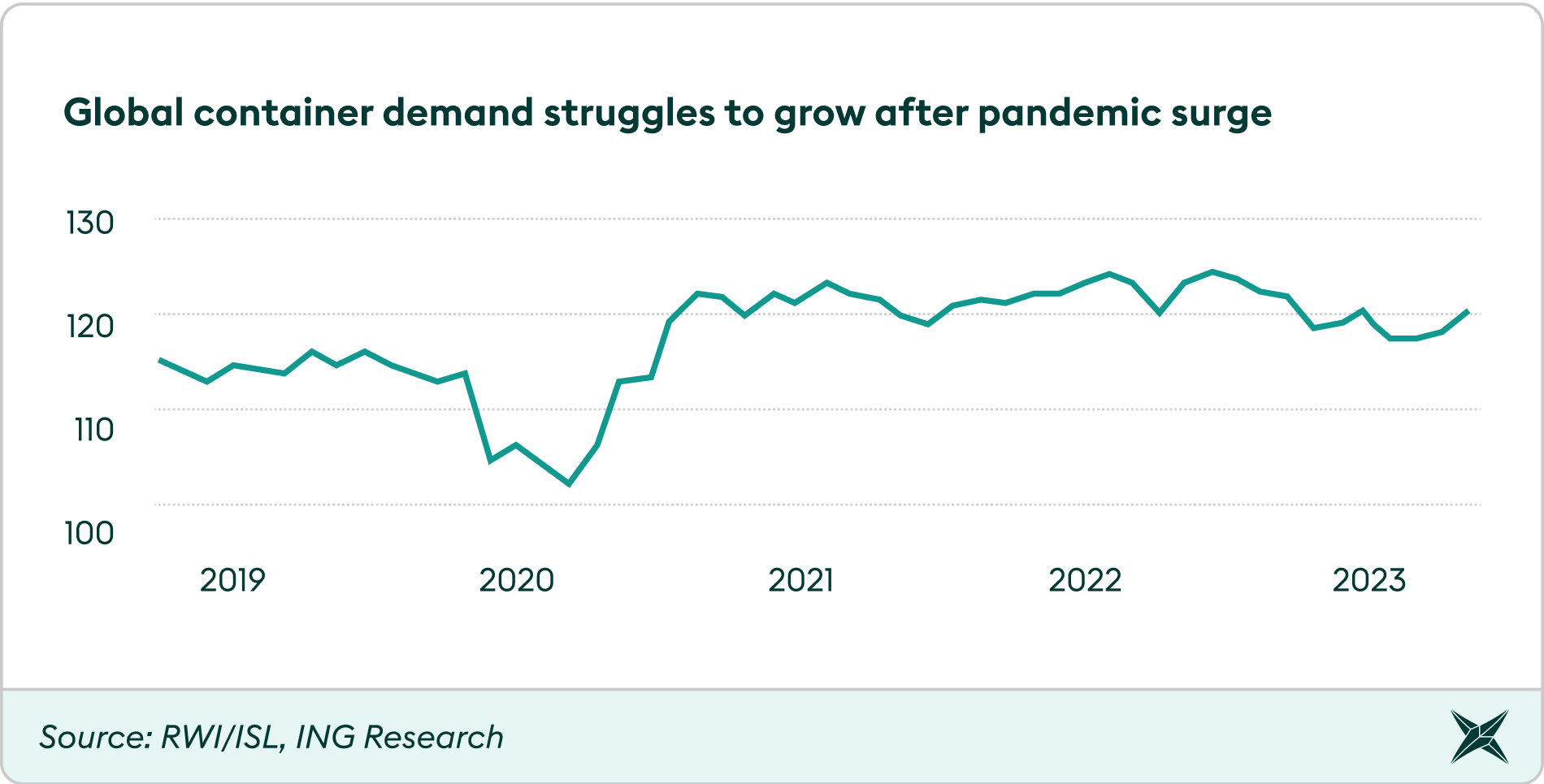

“Container prices took center stage in 2023, emerging as a significant issue in the shipping industry. The quality of the credit related to the trade and lease of shipping containers experienced a sharp decline, causing concern among stakeholders. Furthermore, it is expected that demand for both brand-new and used containers will dwindle as the Chinese New Year approaches, impacting the container market” said Andrea Monti, CEO, Sogese.

“Regarding port pairs, we continue to observe areas with a shortage of containers. Customers are requesting extended container stays, which is affecting the number of voyages we can carry out with our equipment. We anticipate a stable demand for 2024 and a more balanced market supply, primarily driven by evolving environmental regulations that will influence the availability of services, as most companies will be adjusting to the new policies” said Josilene Mattos, Senior Global Account Manager, Hapag-Lloyd AG.
2. Deliveries increasing to 2.95 million TEUs pose risk of oversupply in 2024
The pace of deliveries picked up this year, expected to go higher throughout 2024, and stay strong in 2025. 2.48 million TEUs was set for delivery this year, 2.95 million TEUs next year, and 2.26 million TEUs in 2025.
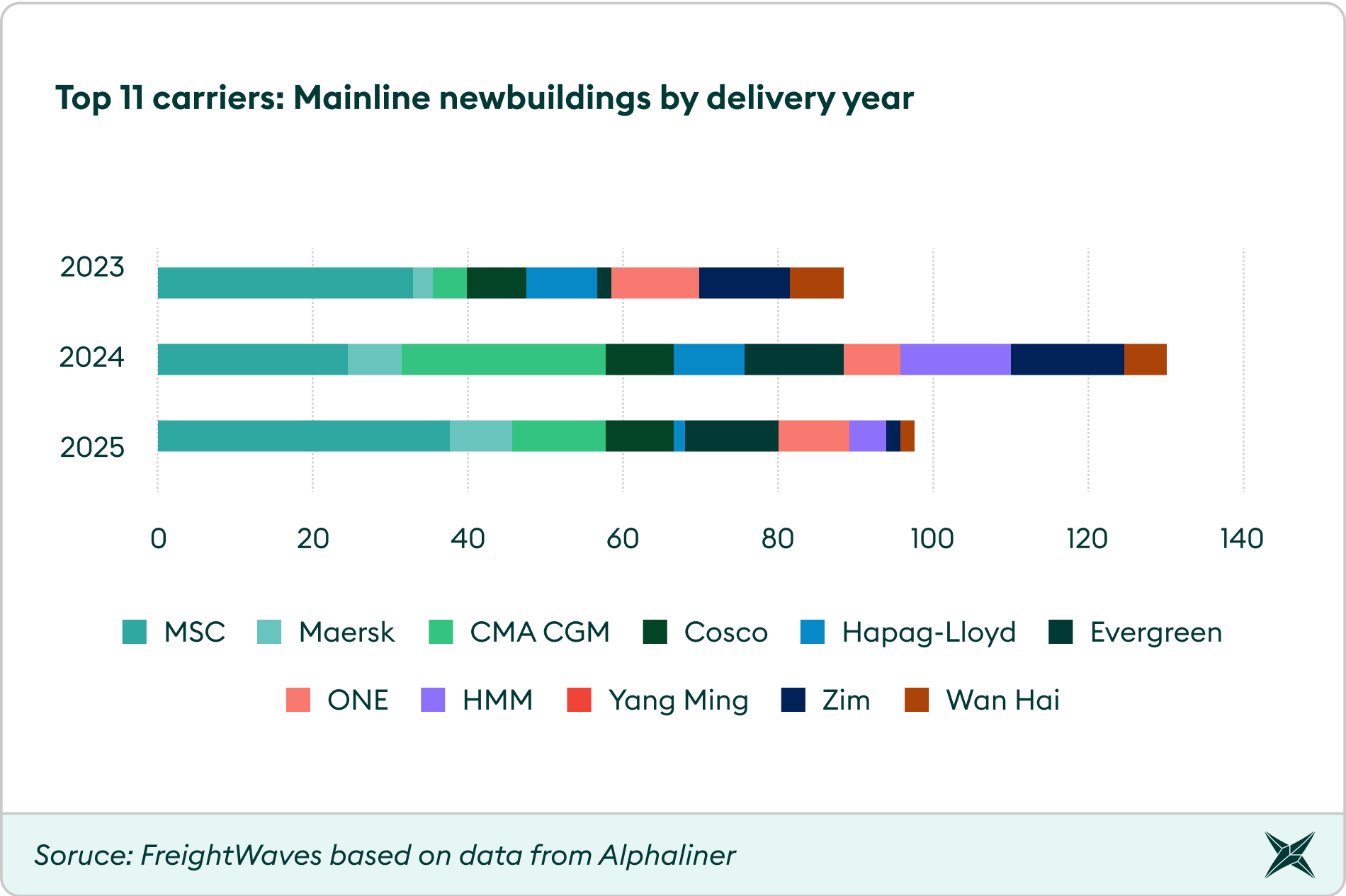
“The North American shipping sector in 2023 is navigating a precarious balance between government-driven demand from programs like the Infrastructure Investment and Jobs Act and rising interest rates aimed at curbing inflation. This has left consumers squeezed, potentially depleting their savings by early 2024, jeopardizing freight demand as capacity increases. Global ocean container companies ordering new ships during the pandemic’s economic boom have created an overcapacity issue that may turn 2023’s profits into 2024’s losses and disrupt reliable container ship scheduling. It’s projected that supply and demand equilibrium won’t be restored until 2026, posing challenges for the industry’s profitability in both the short and long term” said Timothy Renshaw, a British Columbia-based shipping industry analyst and journalist.

3. Geopolitical uncertainties leading to shift in trade routes in 2024
In 2023, geopolitical uncertainties significantly affected the shipping industry, and these effects are expected to continue into 2024. The Russia-Ukraine conflict caused congestion and delays in Black Sea ports, leading to price increases and impacting Ukraine’s exports. A potential China-Taiwan conflict could disrupt global trade in 2024, especially by closing the Taiwan Strait, increasing costs and vulnerabilities. The Israel-Palestine conflict poses risks to key shipping routes, adding uncertainty. The expansion of BRICS, with new members, will diversify trade routes and reshape shipping dynamics.

4. China plus one diversification to become more evident in 2024
Completely disengaging from China is a challenging task, given the extensive electronic supply chains that China has meticulously developed over the past two to three decades. However, an increasing number of companies are making strategic moves to relocate their final manufacturing and assembly processes outside of China, while still relying on Chinese suppliers for essential raw materials.

“As it is difficult for manufacturers to move their entire value chain away from China, we expect an increase in cargo volumes, specifically of semi-finished goods, within Asia. This increase in trade is expected between China and Southeast Asia, India, and other similar destinations, before finished goods are transported to the “consuming” countries. Ultimately this will benefit strong niche carriers and the smaller vessel sectors”, said Christian Roeloffs, cofounder and CEO, Container xChange.
“Importers in the USA have diversified their sources to include Southeast Asia, India, and Pakistan. This strategic move has proven to be a successful business practice and should be sustained in the years to come. Relying solely on a single source is not advisable, as it allows for the growth of other countries in the production of various products” said Josilene Mattos, Senior Global Account Manager, Hapag-Lloyd AG.

“The China Plus One strategy, where companies diversify their sourcing to countries other than China, is expected to emerge in 2024. Many companies are planning to provide themselves with additional containers by January or February 2024, indicating their intent to diversify their supply chains. Companies in Dubai, owned by individuals from India or Pakistan, offering services in the Middle East, are considered strong candidates for implementing the China+1 strategy” said Andrea Monti, CEO, Sogese.
Impact and potential scenarios in 2024
1. Reduced demand and oversupply intensify competition, leading to lower profits in 2024
Competition in the shipping industry has long been a key factor affecting profitability; the break of alliances can have significant impacts on the market dynamics. In 2023, Maersk and MSC announced that their longstanding 2M alliance, set to expire in 2025, would not be renewed, marking a significant shift in the maritime industry. The repercussions of this decision are expected to have a lasting impact throughout 2023 and 2024.
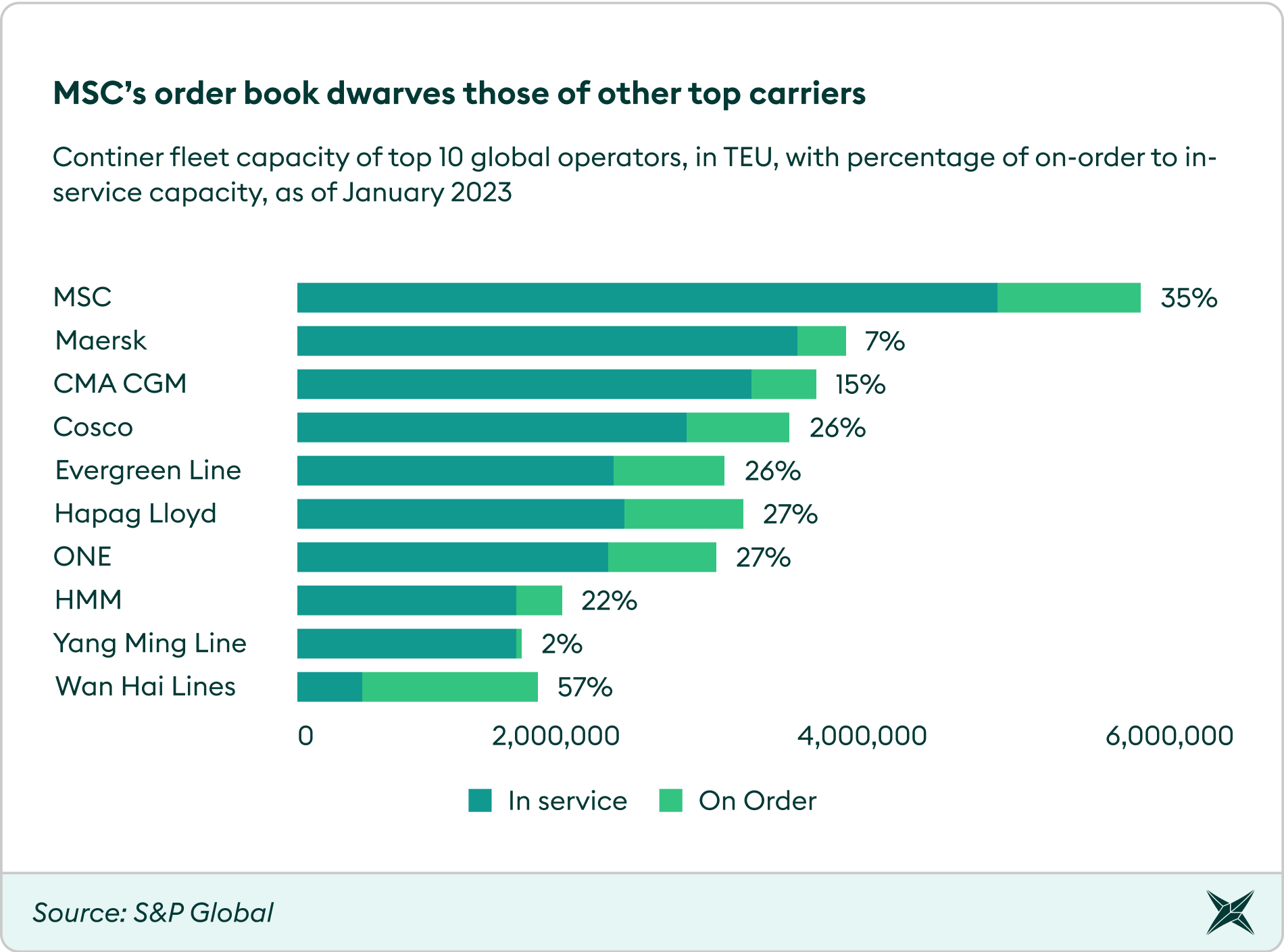
This shift in the industry dynamics opens the door to several potential scenarios. One possible outcome is that the maritime sector, especially as it enters a phase of potential overcapacity, could witness a fierce competition for market share among carriers. This competition might drive down profits, potentially necessitating further rounds of mergers and acquisitions (M&A), particularly if regulatory bodies take action against carrier alliances.
2. Container line schedule reliability on the rise, yet challenges persist
Container line schedule reliability is continuing to improve returning to pre-pandemic levels. The current situation is better than a year ago when 79% of ships arrived with an average of 7.9 days delay. But compared to normal market conditions, there is still room for improvement.
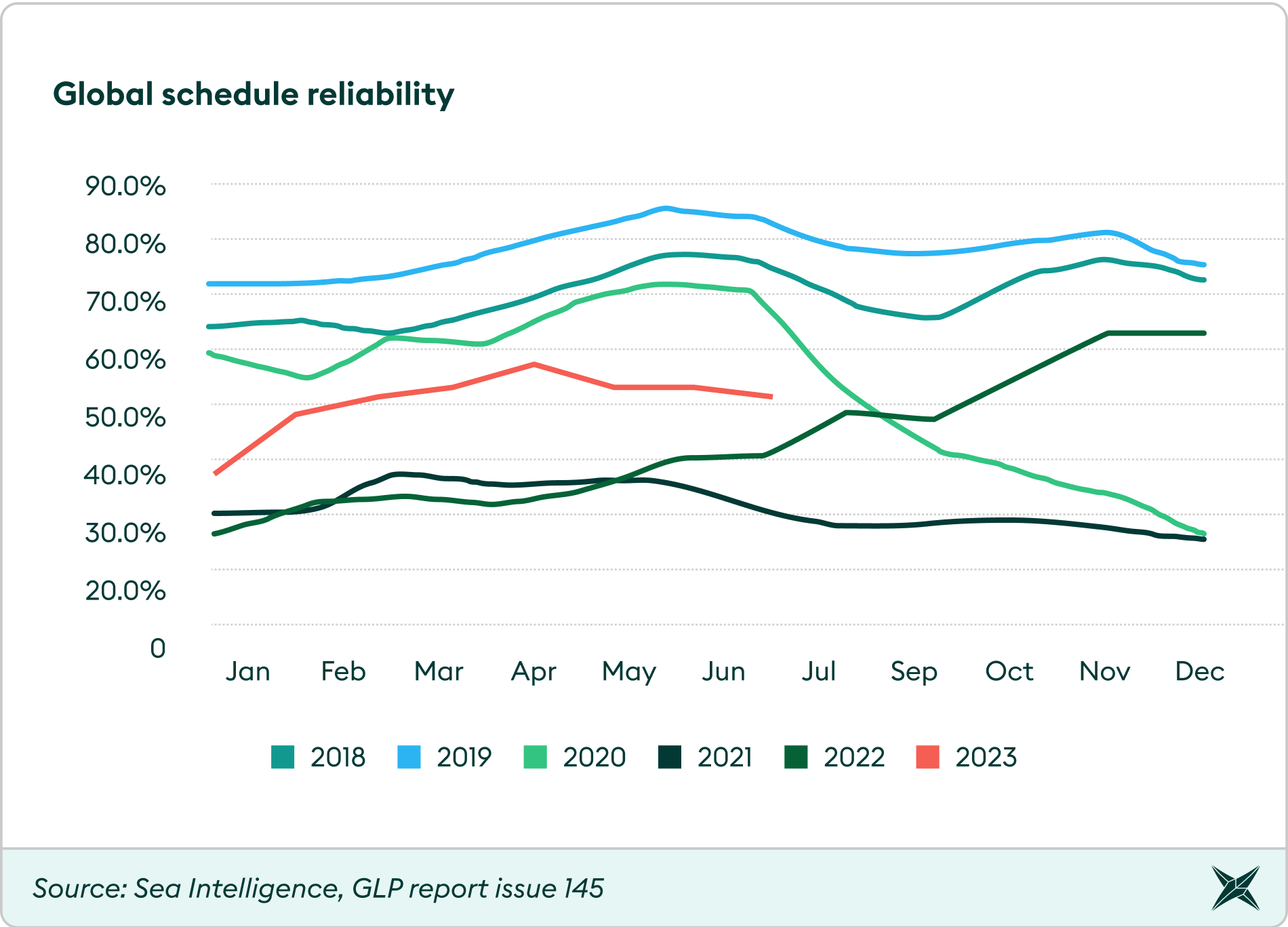

3. Blank sailings to increase in 2024 as market volatility persists
Although they were more organized in 2023 than last year’s sporadic cancellations, blank sailings are still used to stabilize market rates and exert upward pressure on specific trade routes, fueled by surging market demand and carrier actions.
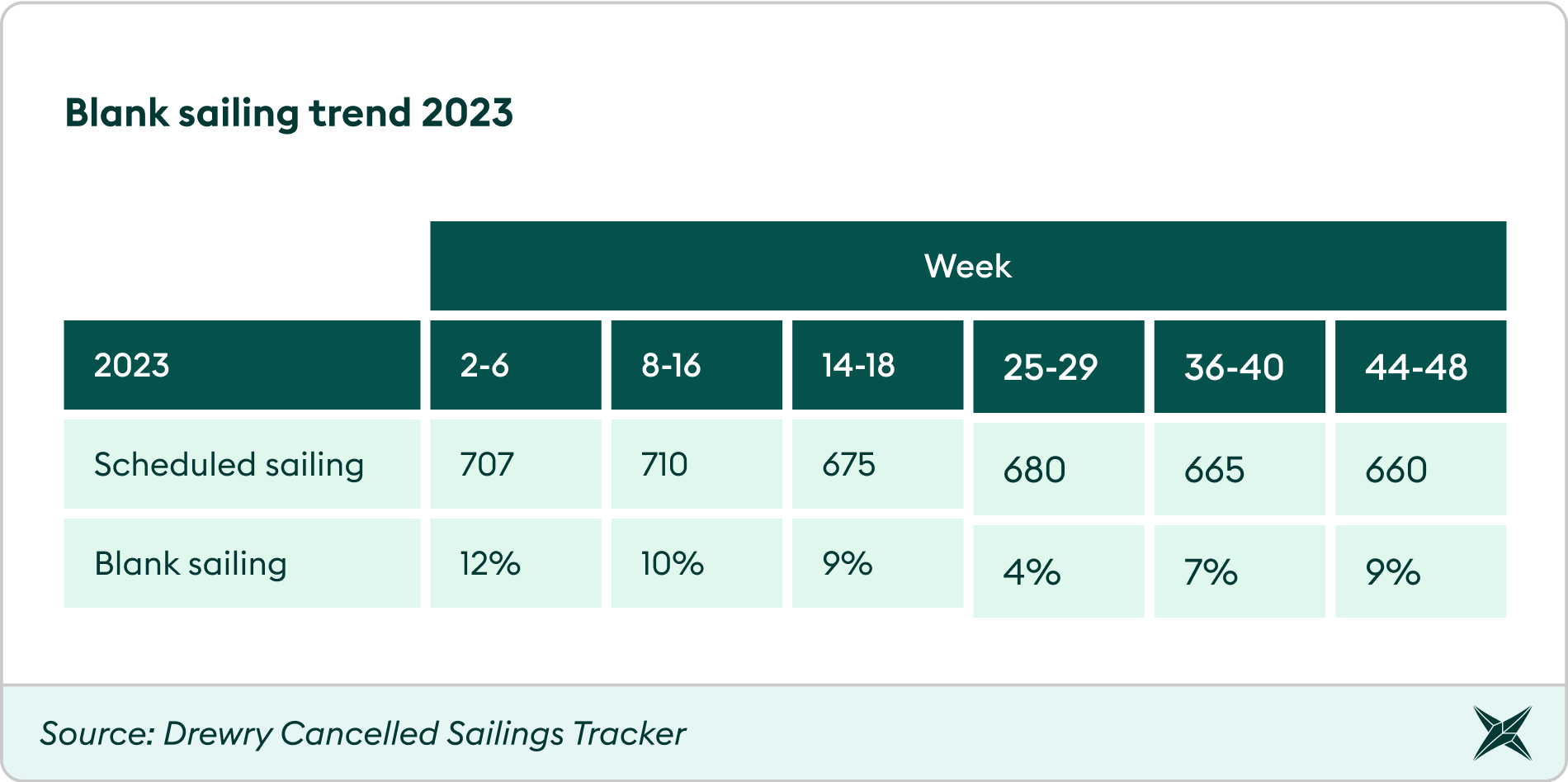

4. Container availability to remain highly imbalanced in 2024
“We have a poisonous mix of severely imbalanced container trade with high level of excess inventory in Europe, and at the same time unreliable shipping services, suddenly lacking the vessel capacity to reposition empties out which in turn makes the situation even more difficult” said Christian Roeloffs, cofounder and CEO, Container xChange.
The excess of inbound containers this October is also evident in the Container availability Index (CAx) which measures the inbound and outbound containers at any given port. For Rotterdam, the values are at an all-time high at 0.70 this October as compared to 0.59 in October 2022. This indicates that the burden of containers is significantly higher in Rotterdam.
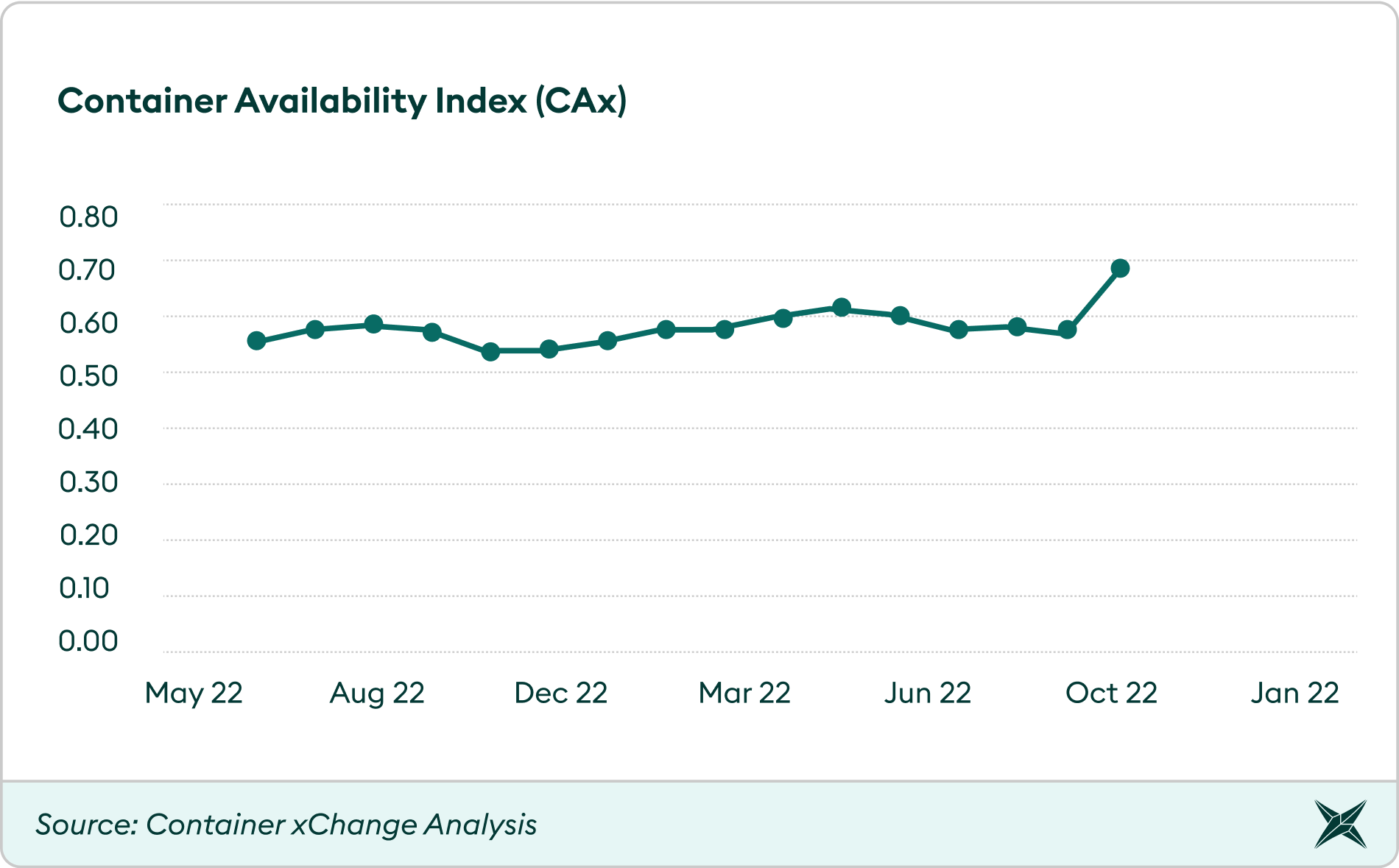
“In 2023, the Russian container-shipping market differs notably from global trends. It’s characterized by a growing focus on autonomy, an expanding linear service network with new ports and routes, continued state support for exporters, local market imbalances, and high freight rates. These factors combine to set Russia’s container-shipping market apart from the rest of the world” said Vladimir Tagasov, Head of Analytics, FESCO.
There is significant cargo movement from China into Russia but very scarce movement back to China from Russia. Containers are piling up in Russia which means that the secondhand container prices are very low in Russia. You see a 40ft high cube container being on sale in Moscow for less than $1,000, while in other parts of the world it is almost double or even more. This is significant and has tremendously detrimental impact on the business of container logistics because of the high imbalance of demand and supply of containers.
“Currently there are around 150,000 surplus containers in Russia, and everybody is looking for an opportunity to return containers back to China. All containers from Russia to China go with a pickup charge. Regarding container trading, many Chinese companies are selling containers below market price to get rid of the boxes since it doesn’t make sense to send them back to China. From Moscow to Shanghai, the offline market offers around $1,500 for new containers. If cargo worthy containers are in good condition and cost less, they prefer to sell the boxes in the local market.
But this doesn’t mean that the market is bad. There are still many companies exporting as many as 4,000 SOC containers from Russia to China. The transactions between China and Russia are still very significant.” a customer of Container xChange shared.
Contact us
Learn from our team how Container xChange helps you lease, buy, and sell containers. Get all your questions answered in a short call.

